Jul31
Jun18
Life is a Cabernet! – Hesperian Wines Napa Valley
 Two college friends on the phone being silly and excited about a new wine: “Life is a Cabernet old chum, life is a Cabernet“. So began the story behind this review. A play on song lyrics from days before our time. But we won’t go there.
Two college friends on the phone being silly and excited about a new wine: “Life is a Cabernet old chum, life is a Cabernet“. So began the story behind this review. A play on song lyrics from days before our time. But we won’t go there.
Celebration was in the air. Friends overdue for a wine-tasting and the news that Whine and Cheers for Wine had cracked the TOP 100 WINE BLOGS by Feedspot: Best 100 Wine Blogs, Websites And Newsletters To Follow in 2019. 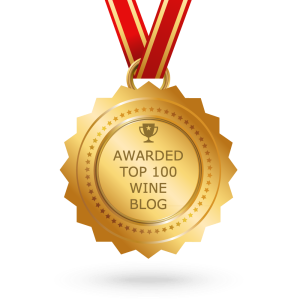
The stage set; wine glasses, note pads, decanters, Coravin, glass identifiers etc. We were even ready for possible pairings; cheeses, charcuterie, nuts, and chocolates along with water crackers for palate cleansing. I say “possible” pairings because as I told the parties involved: “this is all about the wine”. We may pair, we may not. Eventually we did, but not before spending a long time getting to know the wines individually and comparatively. 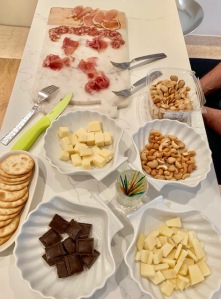
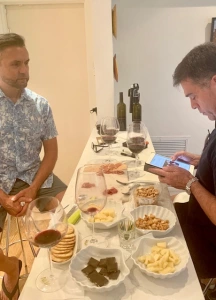
Hesperian Wines come with quite the pedigree thanks to winemaker Philippe Langner and his hands-on experiences from Bordeaux to South Africa and now California with a Rothschild influence here or there.
From Hesperian Wines:
California’s persistent call is an inspiration for the name for his domaine. Hesperian, or “One of The West,” is a name that invokes the mythical garden of Hesperides, a blissful twilight orchard in the west where Hercules once tricked Atlas into helping him complete his eleventh labor.Today Philippe has chosen to make his home and his life’s work in one place: a steep, rocky, 14-acre vineyard named “Kitoko”, the Congolese Lingala word for “beautiful.” This is the place he has chosen to fulfill his vision, combining his exacting knowledge of viticulture and his constant quest for precision—indeed perfection—in winemaking.
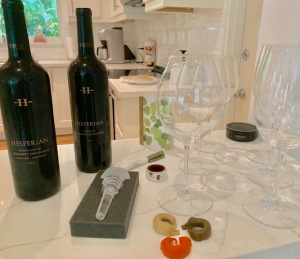
As some of my Whine and Cheers followers may know, I prefer to know as little as possible about a wine prior to a private tasting. In a way I enjoy the discovery aspect of the relationship we are about to build. With the history or backstory hopefully sealing the deal. Leaving me wanting more and looking forward to a second date.
Hearing myself as I write about my passion and the romance behind it I have come to realize that there are wines you date and wines you marry. I have now learned: Hesperian Wines are the marrying kind.
Two wines. Both from Hesperian and wine-maker Philippe Lagner, both 100% Cabernet Sauvignon, and both from the 2015 vintage. Available through their web-site and via Club Membership. How do the wines differ? The Hesperian Napa Valley ($100) was created by combining wines (50/50) from Coombsville and Kitoko Vineyard on Atlas Peak. The Hesperian Kitoko Vineyard ($150) is sourced entirely from the fourteen acre Kitoko Vineyard. Only 300 cases of each were produced.
-Hesperian Napa Valley notes;
Bold nose with new wood [oak] at forefront and a dark fruit background. In addition on the palate our descriptors included; spices (black pepper), leather (even more so on the second pour), forest floor mossiness. This smooth, balanced, structured, elegant wine was all old-world style and the farthest from a fruit bomb a California wine could be.
Vintner notes: 2015 Hesperian Cabernet Sauvignon ~ Napa Valley
With a toasty, Pauillac-like profile, this has plummy and sweet fruit, with aromas that are the essence of ripe Cabernet Sauvignon grapes, a distinctive leathery-fruity smell of its own. The Wine Advocate noted its notes of “licorice, tar, black soil and sautéed herbs over a core of cassis, plum preserves and espresso with a hint of bouquet garni.” Rated 93 points James Suckling
-Our Hesperian Kitoko Vineyard notes:
A softer/demure nose when compared to the Napa Valley above. New wood (oak) at the forefront with red fruit compote in background. In addition on the palate; chocolate, lilac, a peaty earthiness, concentrated dry fruit (fig), anise. This single vineyard wine came across as smoother, more delicate yet wilder. It was incredible to see it develop and come to life in a 20 minute time-span.
Vintner notes: 2015 Hesperian Cabernet Sauvignon Kitoko Vineyard ~ Napa Valley
As you can probably tell by my accolades thus far, these wines were both big hits. Each had its own character and yet some similarities and both can easily age for ten plus years for the collectors out there. The 100% Kitoko Vineyard wine seemed more focused and wilder while the Hesperian Napa Valley came across as bold, rounder with more nuances. Probably due to the blend of the two vineyards; Kitoko and Coombsville. We found both to be inspiring in their own way and considered ourselves lucky to not have to choose between them. Each of these old-world style wines took you on a journey that you did not want to end.
As per Hesperian Wines web-site: Philippe lives and works at Kitoko Vineyard on Atlas Peak, and continues to consult on viticulture and winemaking matters for select Napa Valley wineries. I find myself now looking forward to trying other vintages, previous and future, from Hesperian Wines and other wines produced by Philippe Langner.
How refreshing it is to have this kind of wine coming out of Napa Valley. How lucky are we to have someone of this caliber focused on celebrating the worthiness of individual varietals the way they were meant to be experienced. In this case, Life IS a Cabernet!
¡SALUD!
Additional notes from Hesperian Wines:
Vintage 2017 Outlook
March 31st, 2019
The 2017s were blended in February and put back to barrel. It takes a while for the various lots that went intothe three blends to really integrate well. The wines are coming along nicely. Get ready for very big wines with the ‘17s. This was the vintage of the fire, and I’m very happy and relieved to report that there is no smoke taint in the wines. (I’ve had others smell and taste Hesperian’s ‘17s, and they tell me the same. Relief!)
The 2018s are fantastic, perhaps the best wines I’ve made so far. We are almost done with the first racking; some wines were starting to reduce a bit and they needed some air. Alas, we have to be patient. We won’t see these wines coming available until 2021.
Disclosure: media sample; all thoughts & opinions included in this post/ review are my own.
May30
Ode to Spain & Good Friends – Bodega Pago de Cirsus
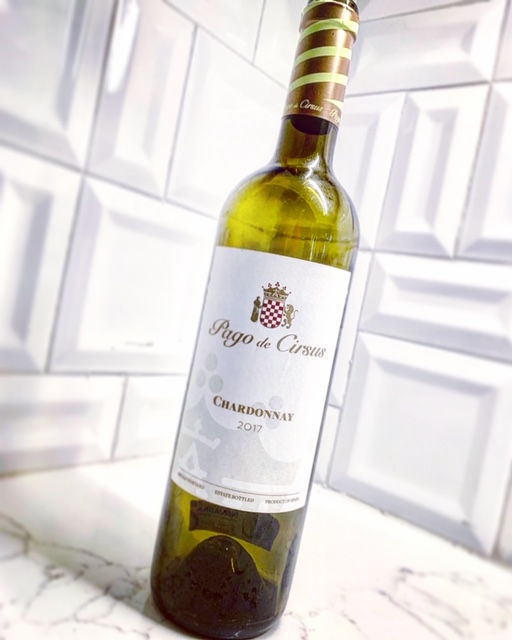 In preparation for a vacation throughout central and northern Spain my vino-loving friends decided to introduce me to the wines of Pago de Cirsus from the region of Navarra. As luck would have it they had me at Navarra, a denomination of origin or region in central-northern Spain that I favor and neighbors the better-known Rioja. I hate to generalize, but I can honestly say that I have never had a bad wine from the Navarra area.
In preparation for a vacation throughout central and northern Spain my vino-loving friends decided to introduce me to the wines of Pago de Cirsus from the region of Navarra. As luck would have it they had me at Navarra, a denomination of origin or region in central-northern Spain that I favor and neighbors the better-known Rioja. I hate to generalize, but I can honestly say that I have never had a bad wine from the Navarra area.
Thanks to the wines of Pago de Cirsus I am happy to report that my favorable opinion of wines from Navarra continues to grow. We didn’t drink them all on the same night, not that there is anything wrong with that, but we had the pleasure of discovering three of their different releases over a couple of different stay at home dinners. It pays to have wine-loving friends and neighbors.
Pago de Cirsus 2017 Chardonnay; hand harvested, 100% Chardonnay
This wine was an immediate hit and surprisingly my first true Chardonnay from Spain. Served with vegetarian / vegan hors d’oeuvres it disappeared quickly and left guests asking for more. This from non Chardonnay drinkers! Beautiful notes of rich tropical fruits; peach, pineapple with no oak detected.
The Chardonnay was actually the last of the three wines sampled and it was sampled on a different night altogether. For the reds, the evening was planned and a bit more organized. As soon as the guests arrived and settled [party of six] the notepads and writing utensils came out. I quickly realized that six different people taking notes in a very social setting was not going to work. Fate intervened and a volunteer note-taker for the group appeared. I will forever be grateful because thanks to this giving soul we have wine notes to review!
Pago de Cirsus 2014 Cuvee Especial; 45% Syrah, 40% Merlot, 17% Tempranillo. Fermented in French oak vats, and then 14 months in new French oak barrels,
With a great pedigree to start, unbeknownst to us, this hand harvested red-blend was selected as the best Spanish red wine, at the 2014 Brussels World Competition, it did not disappoint. Five out of the 6 tasters gave this wine high marks and thought it was representative of a more expensive bottle. Group notes: black pepper, mocha/chocolate, baking spices including clove, blackberry, fig, violet, leather, woodsy [cedar/oak]. Medium bodied.
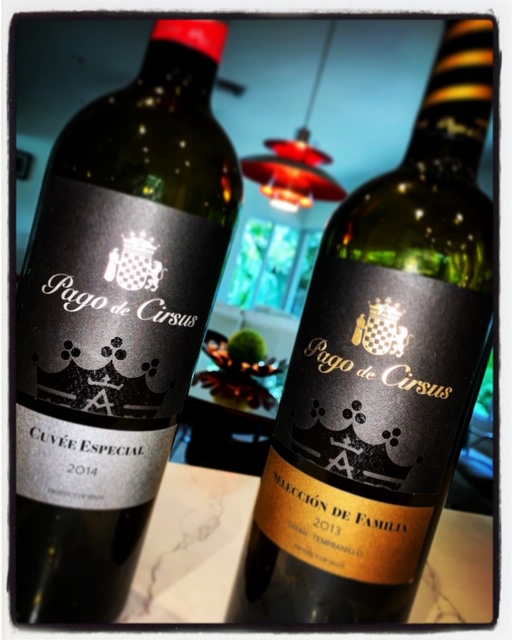 Pago de Cirsus 2013 Seleccion de Familia; 85% Syrah, 15% Tempranillo. Fermented in French oak vats, then 14 months in new French oak barrels. Aged three years.
Pago de Cirsus 2013 Seleccion de Familia; 85% Syrah, 15% Tempranillo. Fermented in French oak vats, then 14 months in new French oak barrels. Aged three years.
This without a doubt was the favorite of the night with six of the six guests agreeing on its excellent quality. A wine to savor with time on your side. The additional aging of this higher end of our three samples truly came through by adding character and richness. A great way to end our wine-tasting event. Group notes: tobacco, leather, black pepper, paprika, red fruits, smooth tannins, long finish.
Although my recent trip to northern Spain and Portugal did not include the Navarra wine-region, I am happy to report that this not known by most area is still tops on my list. As are the wines of Pago de Cirsus which have across the board truly impressed.
So, as I fantasize about another trip to Spain, you better believe I will continue to search out wines by Bodegas Pago de Cirsus, vino from Navarra, and reasons to share with wine-loving friends. ¡SALUD!
May14
The Calling – Wine Spectator Grand Tour
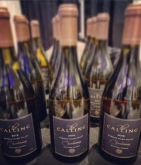 This last week I had the pleasure of working the Wine Spectator Grand Tour during its Miami Florida stop. One of three nationwide events including the cities of Las Vegas and Chicago.
This last week I had the pleasure of working the Wine Spectator Grand Tour during its Miami Florida stop. One of three nationwide events including the cities of Las Vegas and Chicago.
From Wine Spectator
An evening of exceptional wines from the world’s best wine-growing regions in three exciting locations. All wines are rated 90 points or higher by Wine Spectator’s editors. Meet the winemakers, enjoy a delicious selection of food and take home a souvenir Riedel wine glass.
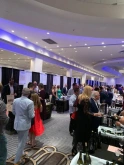
This years Wine Spectator Grand Tour was held at the world-famous and historically significant Fontainbleau Hotel located on Miami Beach. The lobby and its bar alone are worthy of a visit, not to mention the beautiful grounds, pools, spa, restaurants and of course its beautiful beach.
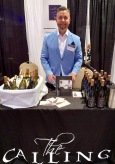
With over 200 wines to sample and explore (wine-list), many with wine-makers and/or winery owners present, this event was a wine-lovers paradise. My assignment for the evening was to represent the California winery The Calling and serve their highly rated, Wine Spectator 91 point, 2015 Russian River Dutton Ranch Chardonnay.
The story of The Calling
It was serendipity that brought Emmy Award winning sports commentator Jim Nantz and wine industry entrepreneur Peter Deutsch together at a restaurant in Greenwich, Connecticut where they were each having dinner with friends. Peter had recently read Jim’s book about his father, Always By My Side, and it resonated with him, reminding him of his own relationship with his father. Peter introduced himself that evening.
Jim was at the restaurant having dinner with a friend who had contacts in the wine industry and was working on an idea that had been in development for years. Jim had long held a passion for wine and was exploring how to take the next step in becoming involved in the wine business when Peter stopped by the table. As fate would have it, that chance meeting would spawn a friendship and partnership, the Deutsch Nantz Alliance (DNA).
Theirs has been a hands-on collaboration. Jim and Peter traveled together to California and worked closely with renowned winemakers Dan Goldfield, Wayne Donaldson, and James MacPhail on every step of the wine-making process, from vineyard to bottle. They also poured themselves into the packaging process, working to capture the essence of the brand in the label design. For Jim and Peter, The Calling is about pursuing a passion, inspiring others, and making a great wine.
 Having the opportunity to work with affable wine-maker James MacPhail throughout the night and being able to ask questions about the process, vintage, etc was like icing on the cake for this wine geek. His shared knowledge along with the quality of The Calling Chardonnay made our evening very successful and fun for all. Throughout the night we were surrounded by nothing but praise from the attendees. With many asking where to buy and return visits to our table to let us know The Calling was a favorite of the night.
Having the opportunity to work with affable wine-maker James MacPhail throughout the night and being able to ask questions about the process, vintage, etc was like icing on the cake for this wine geek. His shared knowledge along with the quality of The Calling Chardonnay made our evening very successful and fun for all. Throughout the night we were surrounded by nothing but praise from the attendees. With many asking where to buy and return visits to our table to let us know The Calling was a favorite of the night.
Aged 11 months sur-lie in french oak, using approximately 35% new oak, with frequent batonage and malolactic fermentation done in the barrel. I found this beautifully rich and balanced Russian River Valley Dutton Ranch Chardonnay to be perfectly made to satisfy the gamut of Chardonnay drinkers. Tropical fruit notes, crisp acidity and its round richness on the palate were attributes and accolades we heard from guests throughout this special tasting event. And I have to admit I agree. With accolades from Wine Spectator; a 91 point score and a spot on their TOP 100 wine list for 2017, this wine deserves all the attention it gets.
To getting The Calling! ¡SALUD!
The Calling Chardonnay is presently available on-line and at your local Total Wine and More store through their Winery Direct program. Price range: $32-$36.00.
Apr20
I need to be drinking more Merlot!
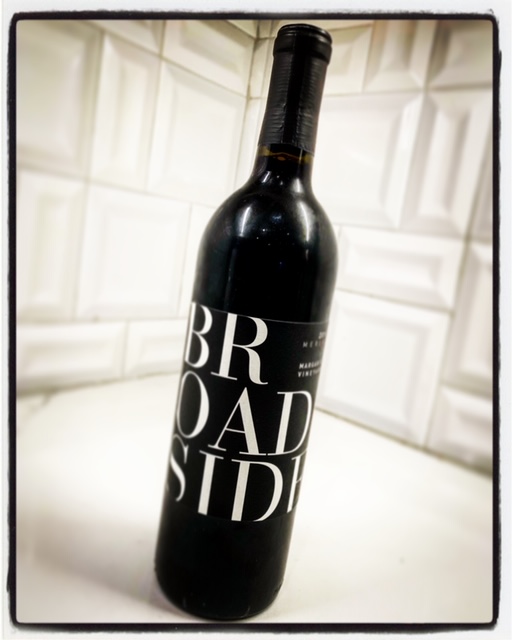
Such was the impression made by this wine that I actually noted I need to be drinking more Merlot if it tastes like this! in my tasting notes. This Paso Robles 2016 Broadside Margarita Vineyard Merlot left quite the mark.
I’ve known about the Broadside Cabernet Sauvignon for quite some time having featured it at our local Whole Foods. Every time we highlighted it with sale pricing, event tastings or big displays, its following would grow. Many a new customer returned for more.
Winery info provided:
Broadside produces wines focused on purity and true varietal expression. We favor balance and simplicity, giving consumers a window to the promise of the central coast and varietal character.. Our wine-making employs a natural approach in that our wines are minimally handled to best express the grape, site and vintage. We harvest at lower sugars and use little to no new oak to create wines of balance and finesse that make sense on the dinner table.
As a big fan of California’s Paso Robles wine region I have always been drawn to anything Paso Robles [click for more info]. I hate to generalize but I have never had a bad wine from this Appellation/AVA (American Viticultural Area) , and I can only say that about three to four sites around the world.
Paso Robles info:
Paso Robles Wine Country is an American Viticultural Area located in the San Luis Obispo County, California. It has approximately 40,000 vineyard acres planted with wine grapes, and is well known for its heritage varietal Zinfandel, Cabernet Sauvignon, and Rhône-style wines.
Although its been a while since I poured Merlot, they have tended to be from Washington State wineries. Big, bold and expensive comes to mind. So I was blown away at the on-line pricing of under $20, if available. This wine easily tastes twice as expensive if not even more.
Broadside Sustainability info:
all of our fruit is sourced from sustainable sources. These vineyards are either SIP, GLOBALG.A.P. certified, or both. With our long-term commitments and direct involvement in these vineyards, we steer farming towards a simple, hands-off approach keeping both chemical (organic or otherwise) and water use to an absolute minimum. We are the first solar-powered winery in Paso Robles’ Tin City, and have taken several steps beyond that to limit impact on our immediate environment.
My notes:
On the nose; red fruit, tropical fruit (fig pulp), slight dry wood notes (vanilla, tobacco, leather), most likely from the fact that they use used oak barrels versus new wood.
On the palate; balanced! (yes with the exclamation point), red fruit at the front, not a fruit bomb, more so dark fruit notes on the finish, luscious legs on the glass, and the previously quoted: I need to be drinking more Merlot if it tastes like this! Yes, with the exclamation point again.
Winery Tasting Notes:
Vivid ruby. Cherry, cassis and succulent herbs on the fragrant nose, joined
by a slowly building tobacco nuance. Plush and supple in texture, showing good depth to
the lively bitter cherry and black currant flavors. A smoky note appears on the finish,
which features velvety tannins and lingering dark berry character.
Brian and Stephy Terrizzi are the winemaker-viticulturist power couple behind Broadside wines. Their dedication to this wine and the wine-making process shines through with their message making it to the wine buyer, the glass and the wine drinker.
If you get the opportunity to try this wine, do not hesitate. You may even come to regret, as I now do, having only bought one bottle….. ¡SALUD!
Mar29
Looking for Inspiration I Found Wine
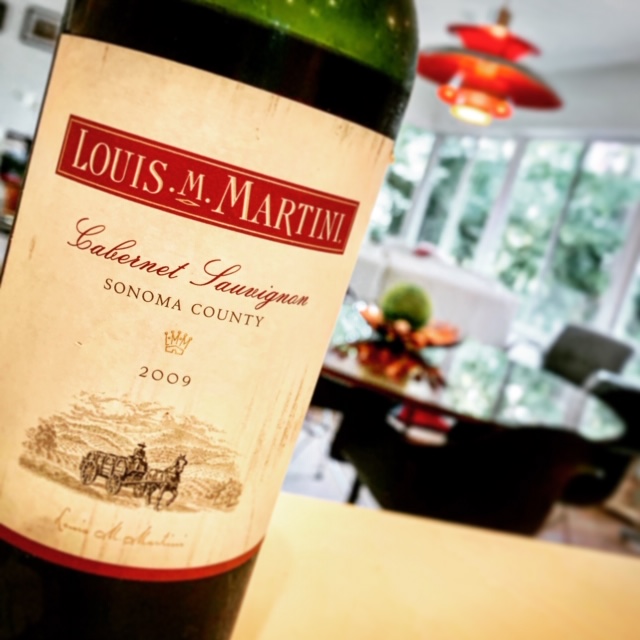 Louis M. Martini 2009 Sonoma County Cabernet Sauvignon
Louis M. Martini 2009 Sonoma County Cabernet Sauvignon
Little did I know that a quick peak inside one of my wine cellars would inspire me to pick a wine, a theme and the perfect quote for inspiration:
This corpulent, plump, juicy, delicious, hedonistic effort should keep for up to a decade – Robert Parker’s Wine Advocate
As I went through wines in search of tonight’s perfect choice, the 2009 Louis M. Martini Sonoma Cabernet Sauvignon called to me. I wasn’t particularly looking for a California Cabernet in fact I was looking for anything but. Yet, this bottle had me at 2009, the vintage.
How had I held on to this bottle for so long? This isn’t a wine I would usually age. Yet here it was. A vague memory told me there was a story and of course there was. Louis M Martini wines, Michael Martini the third generation winemaker (grandson of Louis M. Martini) and even my parents played a part. Should you be intrigued and want to know more just click on the link provided although it’s not required:
Napa Valley – 2009 Louis M. Martini Cabernet Sauvignon
Yes, my first inspiration was the vintage. But as I researched the wine itself and came across the Wine Advocate quote, I just knew the wine Gods had pointed me in the right direction: “should keep for up to a decade”, well let’s see about that!
Flash forward:
DAMN! or YES! they were right. Referring to wine reviews and winemaker notes describing this wine to be big, bold, corpulent, hedonistic, and high-toned it is now interesting to experience and taste how the aging process of ten years enhanced and yet softened this wine.
Notes:
Rich dark dried or candied fruit on the nose; plum, blackberry, prune, raisin. Compote like. Same on the palate with the addition of an earthy and vegetative taste. Now ten years after harvest, I found it to be as smooth as a big Pinot Noir from Oregon or South America, yet still a California Cabernet.
Inspiration found, how lucky am I……. ¡SALUD!
Dec13
Napa Valley – Mount Veeder Winery 2010 vs. 2014 Cabernet Sauvignon
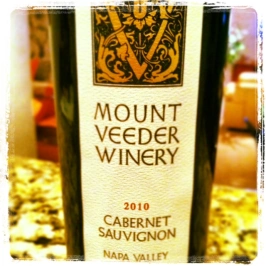
I am finding it quite interesting to revisit previous posts on Whine and Cheers. Comparing vintages from the same producers adds to the excitement.
A recent promotional Amazon/Whole Foods Market wine program did the job of reminding me about Mount Veeder Winery and their 2010 Napa Valley Cabernet Sauvignon. My original post is provided below.
Fast forward to 2018 as I find one lonely bottle of the 2014 in a display of the 2015 vintage. Cue the spotlight and celebratory music in the background. Yes, I realize I am a wine geek. But I am a wine geek that just found a highly regarded 92 point rated wine that I may never see again!
And that’s how this review came to be. Well actually will come to be, because I haven’t tried the wine as of yet. Wait for it; I will be partaking and writing my post LIVE or as live as it can be by the time you are reading this. I usually, have my wine, collect my notes. do some research and write as the spirit moves me. Well, not today! Is that a cork I hear popping? Or is it the sound of my Coravin slurping…
Winemaker Notes
Deep ruby in color with intense dark fruit aromas of black currant, followed by wet earth, mushroom, and caramelized sugar. Hints of dried herb and the classic California bay that is a signature of Mt. Veeder round out the nose. Earthy flavors that evoke the mountain follow, along with dark chocolate, black olive, and sweet bay leaf. The palate is long and rich with classic cassis flavors that linger. The soaring structure and acidity ensure its age-ability for years to come.
Blend: 82% Cabernet Sauvignon, 10% Merlot, 3% Petit Verdot, 2% Cabernet Franc, 2% Syrah, and 1% Malbec.
My Notes, happening now:
Herbaceous with red and dark fruit on the nose, including; white pepper, bay leaf, forest floor, mushrooms and some alcohol that soon dissipates. For me it was fruitier on the finish than at the front palate. Although a bit tight at the start, decanting or aging will make this a smooth beauty in the days to come.
On-line acclaim:
92 Pt James Suckling – Aromas of plums and terracotta follow through to a medium to full body, soft and velvety tannins and a juicy finish. Delicious already. Drink now or hold.
So glad I got to rediscover this old favorite. Happy to also see that a new vintage is available so I have some catching up to do. Did someone say 2015? 2016? I need to start making some room in the wine cellar. ¡SALUD!
The previous post…….
I have my new customer base at Whole Foods Market North Miami to thank for introducing me to the Mount Veeder Winery Cabernet Sauvignon. Customer after customer, probably better described as fans of this wine have repeatedly let me know how well priced [$30-32.00 range] this wine is at our store. I’ve had shoppers buy it by the case [with an extra 10% discount] tell me they can’t get it better priced on-line or via wine clubs. Good for them and good for us!
Mount Veeder Winery in Napa Valley, was the first to grow all five red Bordeaux varietals planted on the same property. In fact this Cabernet is actually made up of; 79% Cabernet Sauvignon, 17% Merlot, 3% Petit Verdot, 1% Malbec.
Winery info:
Mount Veeder Winery is a dramatic estate with three vineyards carved high in the hillsides of the Mayacamas Mountains, overlooking southern Napa Valley. The property totals 121 acres, mostly forest and brush, out of which only 47 are planted to vine.
Vines ranging from 1,000–1,600 feet in elevation cling to rugged, steep slopes that offer cool conditions that lead to slow ripening, which extends the growing season. Mount Veeder is usually the last to harvest in Napa Valley. The result is fruit with highly concentrated flavors – big, bold and brambly – a Cab lover’s feast.
My notes:
Dark ruby-red in color I noted the fact the nose was so well-balanced immediately as I decanted. Within minutes wood [oak] started to overtake the dark fruit. The aroma of leather arrived soon afterwards with the return of rich fruit as mere minutes passed.
With bold tannins and medium body this wine needs to breathe/open. A richness developed at the 20-30 minute mark with eucalyptus and an earthiness on the nose and palate. At one and a half hours cocoa, cigar box and a fruit finish was established. By the 2 hour mark the herbaceous notes on the nose expanded along with vanilla on the palate. At 3 hours my notes just read; incredible smoothness.
Obviously I enjoyed this wine and I can see why many of my customers do also. Would I decant this wine for 3 hours? Probably not. But I have to admit the “smooth” epiphany at one and a half hours was well worth the wait! Not only will I need patience when pouring this wine again, yes I have another bottle in the cellar, but I will also need the gift of patience to wait and not open it tonight! ¡SALUD!
Winemaker Jane Myers notes:
Appearance: Deep ruby
Aromas: Ripe black currant, dark cherry, and lilac interlace with black pepper, bay leaves, coffee, and toasted oak to create a rich, dense nose.
Flavors: Powerful, rich, and textured notes of dark cherry, ripe plum, caramel, and vanilla weave an intense, voluminous mouthfeel accented by hints of anise and mocha. The back palate is rounded out by a lengthy yet smooth finish of vibrant sweet oak, tobacco leaves, and black olives.
Time in Oak: 20 months
Type of Oak: 70% new oak, predominantly French with some American oak.
Total Acidity: 6.1 g/l
Alcohol: 14%
Additional winery info:
Mount Veeder Winery was one born from the hard work and dedication of Michael and Arlene Bernstein. The Bernsteins first discovered the rugged property in the early 1960s and later bought it as a rustic retreat. In the ensuing years they transformed it into an enviable vineyard, almost by accident. After farming the property’s prune orchard for the first few years, a farmhand who lived on the property presented the Bernsteins with a bundle of cast-off grapevine cuttings. Michael stuck the unrooted cuttings into the ground and never gave them a drop of water. Miraculously, of the 60 cuttings planted, 58 lived. Michael turned his full attention to the vines and built his land into a thriving vineyard, ultimately making history as the first vintner in Napa Valley to plant one property to all five of the classic Bordeaux varieties.
Related articles
- Weekend Wine Notes: A Case of Napa Valley Cabernets, Mostly 2010 (biggerthanyourhead.net)
- Ten Napa Valley wineries that should be better known (steveheimoff.com)
Dec13
I’ve been taken Prisoner yet again! The Prisoner Wine Co.
The excitement was in the air recently with the new 2017 vintage release by The Prisoner Wine Company. Weeks before, the previous vintage had sold out and I had prepared my team for the barrage of daily questions as to why it wasn’t available or when new product would arrive.
The past couple of Prisoner releases I had noticed that the wines improved with age versus being good upon release. Those days are behind us now and I am happy to report that not only do we have stocked shelves but the 2017 is drinking beautifully now.
A lot has changed in the wine world since I wrote about The Prisoner a few years ago. See original post below. The one constant or I should say “constants” are; excellent quality and the popularity of the brand continues to draw excited customers.
My notes:
On the nose detected syrah and zinfandel notes along with a light oak woodiness. On the palate, although fruit forward at the front palate, I was very surprised at its restraint compared to what I expected. I found the finish earthy and with a bit of alcohol detected. While decanted it started to open up nicely and quickly. As mentioned above; surprised that the wine was drinking so well now.
While thinking about writing this review I decided to take a peak in the wine cellar. Okay, one of my wine cellars. I was very excited to find 2007 (!) and 2013 vintages awaiting my trial!
I think I may enjoy this “being taken Prisoner” part of my job…. ¡SALUD!
Orin Swift 2008 The Prisoner Napa Valley Red Wine

After many years of hearing about this wine and its fabulousness I finally had the chance to partake thanks to having received the 2008 vintage, a 92 pointer per Wine Spectator, as a birthday gift this past year. I now know what all the hoopla is about and can see why The Prisoner has and continues to develop a following selling out year after year. To think I was able to cellar mine for 6 months before finally letting myself be imprisoned. Unbeknownst to me the 2008 has been sold out for a while now, along with the 2009. For the most part only the 2010 is now available, running approximately $28-38.00.
This Orin Swift Proprietary Blend contains mostly Zinfandel and Cabernet Sauvignon with smaller amounts of Syrah, Petite Sirah, Charbono and Grenache also, coming across as very well-integrated.
Opaque and ruby garnet in color I detected; leather, black pepper, cedar, raw green pepper and dark ripe fruits in the nose. Peppery on the tongue I detected flavors of; blackberry, vanilla, spice, cherry, the acidity of plum. Fig, raisin & prune as it opened and even more so in the long finish.
Related articles
- Orin Swift Wines: A Secret Love, Met Again at Plumpjack Squaw Valley (winebiznews.blogspot.com)
- A Wine For Wall Street This Season, “The Prisoner” (forbes.com)
Jul26
Picture It! 1924

Gnarly Head’s 1924 Double Black Red Wine Blend is an ode to the days of Prohibition. As per the label: “wine’s darkest hour when it was deemed illegal”. Luckily for us, the year 1924 was also when this winery set down their wine roots.
I recently discovered this Limited Edition Gnarly Head production in our wine department at Whole Foods. My beverage buyer had decided to bring it in and create a small display. After sampling this wine, we may want to go bigger.
Having enjoyed Gnarly Head wines, mostly Zinfandel, this Lodi California blend caught my eye. The frosted bottle didn’t hurt either. The fact that it is presently priced under $10 pretty much decided it for me right then and there. Tonight’s wine was chosen.
Slightly chilled to room temperature, remember I live in the tropics, this wine poured a dark rich garnet purple color. The nose boomed with power and excitement of dark fruit such as; blackberry, fig, blueberry, raisin with a bit of cocoa thrown in. The palate was pretty much the same with a bit more chocolate and the addition of caramel.
This velvety fruit forward bold field blend managed to satisfy all my wine needs. This says a lot of a wine at this price point. Luckily I am not alone. Wine Enthusiast rated a recent vintage 90 points and classified it under their BEST BUY distinction. VIVINO app customers also rate it highly. This easy drinker is a secret no more.
I am predicting that with in-store wine tastings our small display will need refilling on a regular basis. A great example of QPR [quality to price ratio] if I ever did see one. Here’s to spreading the wine gospel!
¡SALUD!
Jul23
Nothing Small About This Petit Chablis
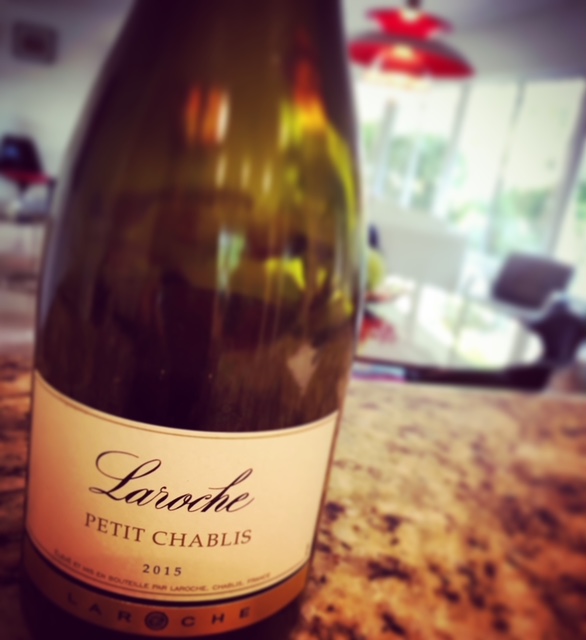 As a wine student, educator, buyer and lover I truly enjoy discovering new varietals and regions. Sometimes I come across them myself or am guided to them by vendors, distributors, customers or friends. Petit Chablis falls into mostly the customer category. I’ve had many a customer refer to Petit Chablis as a varietal when in fact it is a region or better yet an appellation of the area known as Chablis, in Burgundy France.
As a wine student, educator, buyer and lover I truly enjoy discovering new varietals and regions. Sometimes I come across them myself or am guided to them by vendors, distributors, customers or friends. Petit Chablis falls into mostly the customer category. I’ve had many a customer refer to Petit Chablis as a varietal when in fact it is a region or better yet an appellation of the area known as Chablis, in Burgundy France.
Within Chablis and its sub-regions; A dry with little to no oak Chardonnay is the required grape varietal for wine making.
Pairing suggestions from bourgogne-wines.com
Petit Chablis has a tang of ozone about it which calls for oysters, raw fish, and prawns (raw, grilled, or in sauce). It also makes a willing partner for small river fish (fried), grilled sardines, and numerous other fish species. But above all it is its frisky and energetic character which constitutes its charm. It is masterly with fried eggs and omelettes, as it tames their heaviness in the mouth. In the same way, it lends definition to tripe sausages (andouillettes) and snails (escargots). Goat cheese is perfectly at ease with its roguish appeal, as are pressed or hard cheeses such as Gouda or Gruyère. Its freshness and simplicity make it an ideal wine for summer salads or as a pre-dinner drink – try serving it with savory puff pastries (gougères).
Petit Chablis although highly regarded is not that well-known by much of my customer base. That said, we do carry one example of it in our French wine area and I am happy to report I find it worthy. Having wanted to try it for a while I finally got a chance to sit down and ponder about the 2015 Laroche Petit Chablis.
My notes:
Beautiful pale straw yellow color in the glass. On the nose; fruit at the front with a mineral background. On the palate; medium bodied, again with green fruits at the front, a nice rich roundness in the mid-palate followed by minerality with great acidity. Somewhat reserved overall not bold.
It is interesting to note the difference between a bold California Chardonnay and this french import. I see where this would work very well with the before-mentioned goat cheese, salads and seafood whether cooked or raw. To me when pairing, this is closer to a Sauvignon Blanc than to the California style Chardonnay of late.
I am looking forward to sharing this wine with customers and friends who at the time may not know what a Petit Chablis is but I guarantee they will not forget anytime soon.
¡SALUD!